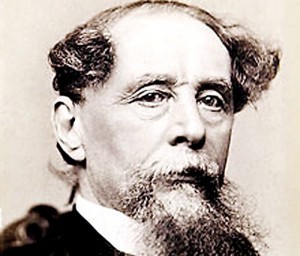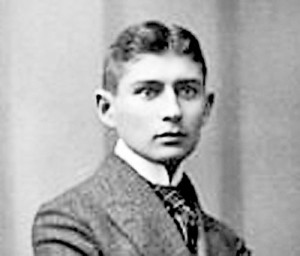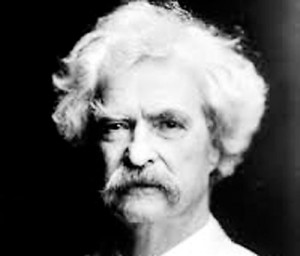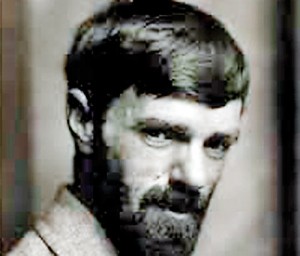When the pen falls
Novels unfinished due to the inopportune death of the author form an intriguing aspect of the history of literature.
They’re an eternal mystery for readers. What might have been? It’s a subject that’s interested me for some time and manifested itself in “Ceylon Connection with Dickens’ Unfinished Tale”, The Sunday Times, 11 & 18 October 1998, regarding Dickens’ last novel, The Mystery of Edwin Drood.

Charles Dickens
This particular unfinished novel has caused much conjecture and many unauthorized completions. Interest remains: there’s been a recent outbreak of fiction inspired by the tale, witness Jean-Pierre Ohl’s Mr Dick (2008), Matthew Pearl’s The Last Dickens (2009), and Dan Simmons’ Drood (2009).
Other incomplete novels have been finished by authorized writers – Willie Morris tackled James Jones’ Whistle (1978) and Robert B. Parker undertook Raymond Chandler’s Poodle Springs Mystery (1989) – although literary purists still consider them unfinished.
Some have been published in their incomplete state: Robert Louis Stevenson’s Weir of Hermiston (1896), F. Scott Fitzgerald’s The Love of the Last Tycoon (1941), Truman Capote’s Answered Prayers (1975), Albert Camus’ Le Premier Homme (1994), and Vladimir Nabokov’s The Original of Laura (2009).
What I believe is the first instance of a variant of authorized completion has emerged in Colombo: the publisher publishes with an invitation to the public – together with the author’s heirs – to submit an ending, the best-judged of which will be incorporated in a complete edition. The novel in question is Nihal de Silva’s Arathi, and there is a reward for the winning dénouement.
Here are some scanty details concerning a few of these unfinished novels – in no particular order – that I have garnered: scanty but I hope intriguing enough to warrant, in some instances, a search for the books concerned.

Franz Kafka
Franz Kafka’s first novel, incomplete, titled Amerika, was written between 1911 and 1914 and published posthumously, as with much of his work, in 1927. The novel began as a short story, “The Stoker”. The narrative covers the roaming of a teenage European emigrant, Karl Rossmann, in America, where he had to travel to escape the scandal of his seduction by a maid. Apparently the novel incorporates the experiences of his relatives who had emigrated to America.
Kafka’s The Castle, about bureaucracy and the alienation it causes, was also incomplete at his death, ending in mid-sentence. The central character, K, struggles to gain access to the mysterious authorities of a castle who govern his village. Kafka suggested the story would end with K dying in the village; the castle notifying him on his death bed that his “legal claim to live in the village was not valid, yet, taking certain auxiliary circumstances into account, he was permitted to live and work there”.
Jack London wrote part of a thriller, The Assassination Bureau, Ltd, which was completed after his death by Robert L. Fish, an American writer of crime fiction, and published in 1963. Fish had the benefit of additional notes by London and an ending suggested by London’s wife, Charmian.
The plot involves Ivan Dragomiloff, who, ironically, finds himself pitted against the secret agency he founded, The Assassination Bureau, Ltd., which eliminates corrupt politicians, police commissioners, administrators and the like. Thus the novel is of contemporary interest. It’s based on a story idea London purchased in 1910 from Sinclair Lewis. London should not have been so persuaded by Lewis’ story, for having written 20,000 words he stopped, unable to find a rational way to conclude the novel. It remained unfinished at his death in 1916.

Robert Louis Stevenson
The Weir of Hermiston by Robert Louis Stevenson was incomplete at his death in 1894. Published in 1896, it is considered by many to be a potential masterpiece. Set in Scotland during the Napoleonic Wars, the story concerns Archie Weir, a young man from an upper-class Edinburgh family. Archie is estranged from his father and sent to live as the local laird on a family property in the vicinity of Hermiston. He meets and falls in love with Kirstie (Christina). As their relationship deepens, the story ends prematurely.
Like Kafka, Stevenson left two unfinished novels. St Ives: Being the Adventures of a French Prisoner in England was concluded in 1898 by Sir Arthur Quiller Couch, who wrote the first ‘modern’ (late 19th-century) novel set in Ceylon, Dead Man’s Rock (1880). St Ives concerns the adventures of a Napoleonic soldier, Capitaine Jacques St Ives, after his capture by the British.
Wilkie Collins left an incomplete novel, Blind Love, on his death in 1889, but it was finished by historian and novelist Sir Walter Besant. Collins’ novel had already begun serialization in The Illustrated London News even though the author had not yet completed it (a common occurrence: the same happened with Dickens’ The Mystery of Edwin Drood). It was published as a book in 1890 with a Preface by Besant explaining the circumstances of the collaboration.
According to Besant, Collins had started to write the novel in 1887 upon reading accounts of violence in Ireland after the defeat of the First Irish Home Rule Bill. The novel recounts the story of the Irishman, Lord Harry Norland, a member of a team of political assassins, and how a maverick Englishwoman falls in love with him despite his activities.

D.H. Lawrence
The Love of the Last Tycoon, an unfinished novel by F. Scott Fitzgerald, was compiled posthumously by critic Edmund Wilson, and published, still unfinished, in 1941 as The Last Tycoon. It was not until a 1993 edition, edited by Matthew J. Bruccoli, that the work first appeared as The Love of the Last Tycoon, Fitzgerald’s intended title. The extant 17 chapters of the 31 planned by the author were reassembled by Bruccoli.
In a 1993 review in Publishers Weekly, The Love of the Last Tycoon is stated as being “generally considered a roman à clef”. Of certainty is that the tale is inspired by the life of Irving Thalberg, the highly successful film producer. The protagonist, Monroe Stahr, is based on Thalberg and the story relates Stahr’s rise to power in Hollywood.
The Sense of the Past is an unfinished novel by Henry James, posthumously published in 1917. The novel is described on Wikipedia as “an eerie account of time travel and a bittersweet comedy of manners”: a young American swops places with an ancestor in early 19th century England and encounters many difficulties along the way. “The Sense of the Past might have become a brilliant, subtle exploration of the influence of the past on the present, but it is impossible to judge a novel that was left unfinished.” The novel was the inspiration for John L. Balderston’s very successful 1929 play, Berkeley Square.
D. H. Lawrence’s Mr Noon is an unfinished novel in two parts. The first, set in England’s East Midlands where the author was born and spent his youth, was published posthumously in the short story compilation, A Modern Lover (1934). The second part describes the experiences of the main character during an elopement in Europe. Both parts were finally published together as Mr Noon in 1984.
Raymond Chandler’s eighth Philip Marlowe novel remained unfinished at his death in 1959. The four chapters he had completed, which bore the working title “The Poodle Springs Story” were subsequently published in Raymond Chandler Speaking (1962) as “Poodle Springs”. In 1988, on the centenary of Chandler’s birth, his Estate asked crime writer Robert B. Parker to complete the novel. The result was adapted into a film in 1998 directed by Bob Rafelson of Five Easy Pieces fame, and starring James Caan as Marlowe.
Dubrovsky is the title of an unfinished novel by Alexander Pushkin, written in 1832 and published in 1841 after his death. Vladimir Dubrovsky, a young nobleman whose land is confiscated by a powerful aristocrat, seeks justice. He musters a band of serfs and runs riot, stealing from the rich and giving to the poor. But he falls in love with the aristocrat’s daughter, which leads to his doom.
Mark Twain is yet another prominent author who has contributed to the Incomplete Novel File. He laboured with what was to be known as The Mysterious Stranger from 1890 until he died in 1910. It is said to be a serious social commentary addressing Twain’s ideas of the Moral Sense and the “damned human race”. Twain wrote three versions of the story. Each is unfinished and involves a supernatural character called “Satan” or “No. 44”.
The first version, “The Chronicle of Young Satan”, relates the adventures of Satan, the sinless nephew of the Satan of the Bible, in an Austrian village in 1702. The second version, “Schoolhouse Hill” is set in America and, remarkably, involves the characters Huckleberry Finn and Tom Sawyer and their adventures with Satan. In this version he is referred to as “No. 44, New Series 864962”. The third version, “No. 44, the Mysterious Stranger: Being an Ancient Tale Found in a Jug and Freely Translated from the Jug”, is set once again in Austria, this time in 1490, soon after the invention of printing. The story concerns No. 44’s appearance at the door of a print shop and its catastrophic consequences.
In 1916, Albert Bigelow Paine, who had sole possession of Twain’s unfinished works, published The Mysterious Stranger, a heavily edited “The Chronicle of Young Satan” with an altered version of the ending of “No. 44”. Paine’s work was found to be a literary fraud, for he had referred to characters from different versions of the story, tampered with the three original manuscripts, and added passages not written by Twain. In 1969 a scholarly edition of all three unaltered manuscripts was published titled Mark Twain’s Mysterious Stranger Manuscripts.
Thomas Mann’s unfinished work Confessions of Felix Krull, Confidence Man: The Early Years was published in German in 1954 and in English in ’55. The character of Felix Krull first appeared in a short story written in 1911 and published in Stories of Three Decades (1936). Much later, Mann expanded the story and managed to finish and publish part one of the Confessions, but due to his death in 1955 the saga of the irresistible conman, Felix, remains unfinished.
The Journal of Julius Rodman, Being an Account of the First Passage across the Rocky Mountains of North America Ever Achieved by Civilized Man, is an unfinished serial novel by Edgar Allan Poe. Six installments were published in Burton’s Gentlemen’s Magazine in 1840 but then Poe, contributing editor of the journal, was fired and refused to continue the writing. Such was Poe’s ability to add credibility to his fiction that Robert Greenhow led the United States Senate to believe the story was based on fact, that Poe had discovered Julius Rodman’s journal. However, in the second edition of Greenhow’s Memoirs (1844), references to Julius Rodman were removed.
I mentioned my interest in Charles Dickens’ incomplete The Mystery of Edwin Drood. The story ranges from London opium dens to the cathedral of the town of Cloisterham, England. Most interesting is that it includes two main characters, twins from Ceylon called Neville and Helena Landless. The latter was a formidable female character for Victorian times: “Each time she dressed as a boy, and showed the daring of a man.”
Edwin Drood was left terribly incomplete. Of the twelve parts planned, only six had been written – and even the sixth remainedunfinished.Dickens left no indication of how he intended to proceed with the story. But my fascination with Edwin Drood is not so much with the ending as with Neville and Helena Landless, the enigmatic twins from Ceylon. Were they from Ceylon because Dickens knew John Capper, editor of The Times of Ceylon? How did Dickens perceive their origins? Since he gives no details, I assume they are British residents of Ceylon rather than Eurasians. However, Drood does taunt Neville about his dark skin and Helena is described as being gypsy-like.


